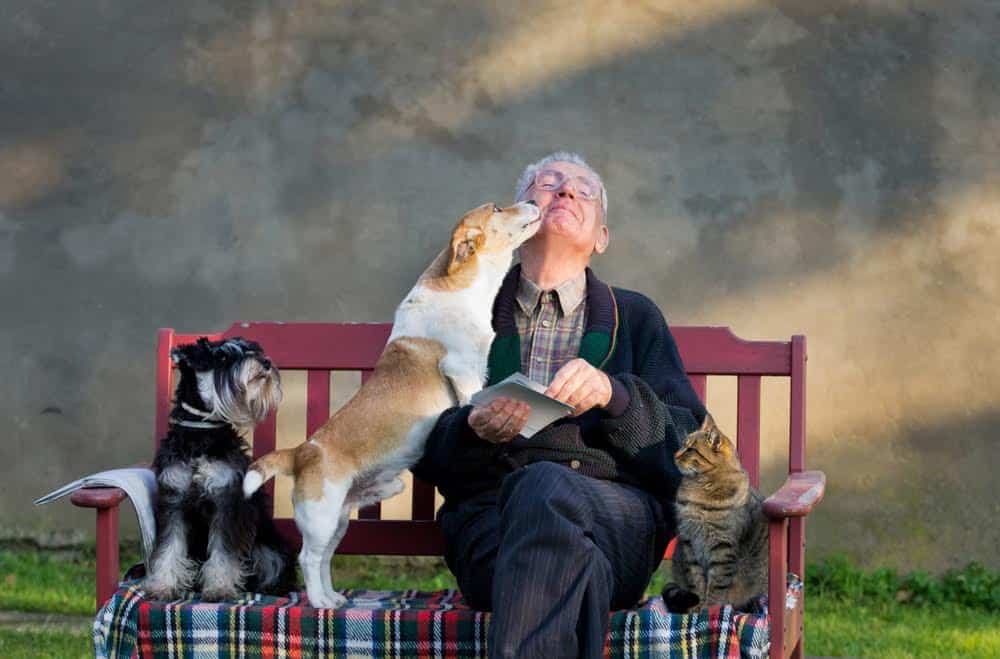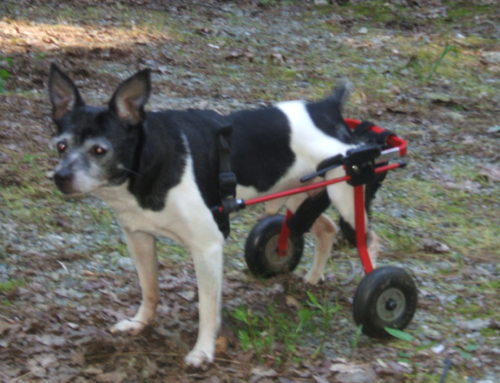I’ve been an animal lover all my life and have had countless pets over the decades. Everything from hamsters as a child, cats in my teens to the many dogs I’ve loved over the years. After having a black terrier for almost eighteen years, I was hesitant to adopt another animal.
But my current little black dog, a purebred Cairn Terrier (she looks a great deal like Toto from The Wizard of Oz), just tugged on my heartstrings and I couldn’t resist. An elderly couple who felt they couldn’t care for her at the level she deserved, gave up their older dog to for me to love and care for in her golden years.
She was eight when I got her and five years later, although she’s slowed down a bit, doesn’t hear so great and I can see some early signs of cataracts approaching, Kady is still just such a little love. Since this is the second dog I’ve had living into their double-digit years, I’ve learned a few things about taking care of a canine that’s advancing in age.
Familiarity Breeds Comfort
When a dog’s eyesight begins to weaken with age, they start to rely more on their visual memory rather than what they can actually see with their older eyes. For this reason, don’t make major changes in the location of furniture, like rearranging the living, dining or other rooms that they frequent. They’re more likely to injure themselves by running into objects in unfamiliar locations.
Multiple Locations
When it comes to their sleeping location, consider offering them multiple options for them to relax and lie down, since older animals will actually slumber much longer compared to their younger counterparts. For example, I have three different beds for Kady to relax:
- In the living room so she can hang out with the rest of the family
- Inside our bedroom where she sleeps at night
- In the master bedroom closet when she wants to “den” and feel safe
These beds should not only be comfortable, but also easily accessible and located in a corner or other area that doesn’t experience a great deal of traffic or other disturbances. There’s also a water dish located next to each of these “crash-spots” for a quick drink before or after resting.
A Single Locale
When it comes to their food dish, and this is good advice for any dog owner regardless of their pet’s age, make sure their dining area stays in just one location. Any canine, especially an older dog, shouldn’t have to wonder (literally) where their next meal is coming from or is located.
Keep Your Routine
Again, excellent advice for any dog owner, keep your dog on a consistent schedule, especially when it comes to exercise, eating and relieving themselves. As animal’s continue to age, they’re more likely to have “accidents” when it comes to urinating and defecating, but far less likely to “mess up” when they’re on a regular schedule.
For example, when I’m walking my little black dog in the mornings and evenings, although the distance we travel has decreased, we still travel the exact same route. She does her “business” in the same spot consistently, just like clockwork.
Dietary Dilemmas
Depending upon their age, breed, size and weight, dietary demands often change as a canine continues to age. Many older animals begin to lose the ability to digest certain substances, especially grains like corn, which can also cause skin allergies and other conditions. Read those labels carefully and make sure the first three ingredients are healthier proteins like chicken, beef, duck, fish and other healthier fillers.
When it comes to your dog’s diet and exercise program, along with their continued advancement in age, always check with your veterinarian before making any changes. With a little bit of exercise, monitoring their diet and ensuring their comfort levels, these little methods will help to ensure your pet will live to be a ripe, old age.
I’ve been an animal lover all my life and have had countless pets over the decades. Everything from hamsters as a child, cats in my teens to the many dogs I’ve loved over the years. After having a black terrier for almost eighteen years, I was hesitant to adopt another animal.
But my current little black dog, a purebred Cairn Terrier (she looks a great deal like Toto from The Wizard of Oz), just tugged on my heartstrings and I couldn’t resist. An elderly couple who felt they couldn’t care for her at the level she deserved, gave up their older dog to for me to love and care for in her golden years.
She was eight when I got her and five years later, although she’s slowed down a bit, doesn’t hear so great and I can see some early signs of cataracts approaching, Kady is still just such a little love. Since this is the second dog I’ve had living into their double-digit years, I’ve learned a few things about taking care of a canine that’s advancing in age.
Familiarity Breeds Comfort
When a dog’s eyesight begins to weaken with age, they start to rely more on their visual memory rather than what they can actually see with their older eyes. For this reason, don’t make major changes in the location of furniture, like rearranging the living, dining or other rooms that they frequent. They’re more likely to injure themselves by running into objects in unfamiliar locations.
Multiple Locations
When it comes to their sleeping location, consider offering them multiple options for them to relax and lie down, since older animals will actually slumber much longer compared to their younger counterparts. For example, I have three different beds for Kady to relax:
In the living room so she can hang out with the rest of the family
Inside our bedroom where she sleeps at night
In the master bedroom closet when she wants to “den” and feel safe
These beds should not only be comfortable, but also easily accessible and located in a corner or other area that doesn’t experience a great deal of traffic or other disturbances. There’s also a water dish located next to each of these “crash-spots” for a quick drink before or after resting.
A Single Locale
When it comes to their food dish, and this is good advice for any dog owner regardless of their pet’s age, make sure their dining area stays in just one location. Any canine, especially an older dog, shouldn’t have to wonder (literally) where their next meal is coming from or is located.
Keep Your Routine
Again, excellent advice for any dog owner, keep your dog on a consistent schedule, especially when it comes to exercise, eating and relieving themselves. As animal’s continue to age, they’re more likely to have “accidents” when it comes to urinating and defecating, but far less likely to “mess up” when they’re on a regular schedule.
For example, when I’m walking my little black dog in the mornings and evenings, although the distance we travel has decreased, we still travel the exact same route. She does her “business” in the same spot consistently, just like clockwork.
Dietary Dilemmas
Depending upon their age, breed, size and weight, dietary demands often change as a canine continues to age. Many older animals begin to lose the ability to digest certain substances, especially grains like corn, which can also cause skin allergies and other conditions. Read those labels carefully and make sure the first three ingredients are healthier proteins like chicken, beef, duck, fish and other healthier fillers.
When it comes to your dog’s diet and exercise program, along with their continued advancement in age, always check with your veterinarian before making any changes. With a little bit of exercise, monitoring their diet and ensuring their comfort levels, these little methods will help to ensure your pet will live to be a ripe, old age.




Leave A Comment